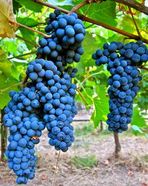 Despite the very recent acclamation it has received,[i] the Vinis vinifera, Trousseau Noir, is considered a somewhat uncommon red grape nowadays when compared to such recognized varietals as Cabernet Sauvignon, Merlot, Pinot Noir, etc. While on the one hand, it has left traces throughout Europe, on the other, it remains somewhat elusive since it is used to blend with other wines, goes by approximately eighteen principal synonyms, and is frequently mistaken for at least six other grape varieties.[ii] It is this elusive quality that may allow it to be referred to as a bit of a “trickster,” or at least to point in the direction of that archetype. For Carl Gustav Jung, archetypes are universally archaic patterns that derive from humanity’s collective unconscious and act as mediators between us and the underlying unified reality from which everything emerges and to which everything returns, the unus mundus.[iii] The trickster archetype is practically universal in the world’s cultures and literatures, and can certainly be a sympathetic, cultural hero, as well as a dark figure of subversion.[iv] As one of the very first tricksters of literature has shown, there are ancient ties between this archetype and wine. In the Odyssey, Odysseus frees his men from the clutches of Polyphemus the Cyclops by first making him drunk on wine, then deceiving him by claiming to be called a different name (in his case, “No man”), and finally blinding him.[v] While the case for claiming this as the origin of the expression “blind drunk” is tenuous at best (and, characteristically, best entertained with levity and numerous bottles of strong wine), it is revealing that, here too, the trickster’s name, or appellation, is a significant issue.[vi] A more modern example of the darker side of the trickster and wines may be seen in Edgar Allan Poe’s “The Cask of Amontillado” where Montresor preys on Fortunato’s greed and gullibility in order to condemn him to immuration in the wine cellar after noticing how “[t]he wine sparkled in his [Fortunato’s] eyes and the bells jingled. My own fancy grew warm with the Medoc.”[vii] As Alexandra Lauren Corrêa Gabbard tells us, “the scenery itself is highly reminiscent of the trickster duality – a mixture of wine cellar and crypt – the casques are piled on top of skulls, which is symbolically charged with the opposite facets of pleasure and pain.”[viii] It is from the perspectives of trickster duality and elusiveness that I approach the beautiful bastard that is Trousseau Noir, aka, Bastardo (among many other pseudonyms). The earliest recorded mention of a “Bastardo” is by Rui Fernandes in his 1531 Descripçâo do terreno em roda da cidade de Lamego duas leguas where, among the “muitas castas” (“many varieties” – 17 in total) of wine in the Douro Valley that he mentions, “Bastardo” is first.[ix] To this day, Bastardo is very common in the Douro Valley, where it is considered a lesser port variety. There are also very small plantings on the islands of Madeira and Porto Santo. As Robinson et al note, proof of the cultivation of Trousseau in Portugal and Spain goes back at least two hundred years.[x] While it is now widely acknowledged that DNA testing has proven the French origin of the Iberian variants like Bastardo in Portugal and Merenzao (and Hebén) in Spain,[xi] the factors that led to this phenomenon are not as clear. Recent analyses of the genetic structure of pears in France, Spain and Portugal, lead to the provocative theory that France provided the introgressant genes by means of the planting of grapes and other fruit crops by monasteries on the old path to Santiago de Campostela “after the Reconquest in the 10th century.”[xii] Through DNA parentage analysis, it is strongly suggested that Trousseau , Chenin blanc, and Sauvignon blanc are siblings, and, further, that there exists a parent-offspring relationship between it and Savagnin.[xiii] 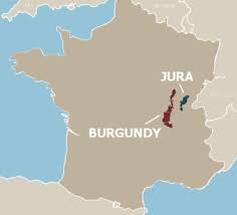 Ultimately, the origins of the Trousseau grape are traced to the Jura region of eastern France, located on the lower foothills of the western slopes of the Jura mountains. The etymology of the grape’s name may derive from the verb “trousser,” meaning “ramasser’” or to gather, harvest. Another possibility is that the people of the Jura relied very heavily on the harvest of this grape for the bride’s “trousseau,” or hope chest. There is a yearly Trousseau Wine Festival in Montigny-lés-Arsures, just north of Arbois, that takes place at the end of July. The distance between the appellation area of Arbois, and Beaune in Burgundy is approximately 80 kms east, as the crow flies. To the west, the distance between Arbois and Geneva is about the same. 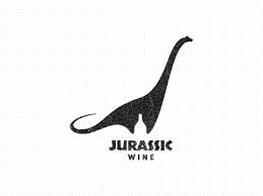 The name Jura is associated with the Jurassic period of geological time between 200 million and 145 million years ago. It was here, in the Jura Mountains, that the rocks of this age were first recognized and, consequently, the period was named after them. After Alexander von Humboldt noticed that limestone dominated the mountain range, Abraham Gottlob Werner named that formation “Jurakalk.” The term’s etymology is traced through Celtic “Jor”, transformed into Latin “Joris,” (or “Juria”) meaning “forest” or “land of forests.” In this vineyard area of about 2100 ha (ca. 0.3% of France’s total and a fraction of its extent at its peak in the 19th century) almost every colour and style of wine is made. The region appellation is Côtes de Jura, with the more specific geographical ones being Arbois, l’Étoile, and Château-Chalan. In fact, Arbois was the first geographical region to receive AOC status in France, in 1936. There are also Crémant du Jura for sparkling wines and Macvin du Jura for fortified wines. The soil is dominated by limestone and marl, which is a clay-limestone. The climate is classified as northern semi-continental, with cold winters, warm summers, and abundant rainfall. The varieties grown in the Jura that are permitted to have AOC classification are two whites, Chardonnay and Savagnin, and three reds, Poulsard, Pinot Noir, and Trousseau. [xiv] The area is also well-known for excellent vin de paille and vin jaune.[xv] Although almost 30 years before its re-birth as an area of renewed oenological interest, Hugh Johnson’s characterization of the Jura is still valid: Unlike Alsace to the north, which lies in the rain shadow of the Vosgues, the west-facing Jura is often deluged by summer rain. Hail is a frequent problem here. But September and October are usually sunny. Jura grapes have been selected because they thrive in deep damp soil, given a good sun-warmed slope. The most widespread is the Poulsard – a pale red which is the nearest thing to a rosé grape. Another obscure red, the Trousseau, is grown with it to stiffen its too ‘supple’ wine. Pinot Noir is increasingly added to give more colour and backbone to red wine – but red is in a minority: most of the wine is rosé, fermented on its pale skins as though intended to be red.[xvi] [my emphasis] Regions that stretch toward northern Europe and are affected by mountains, like Jura (but also Burgundy, Champagne, Valtellina, and Tyrol, for example), are much more influenced by climactic change and far more interesting from an historico-climactic perspective, according to Daniele Lorusso, whose recent doctoral thesis, Il clima del vino. Metodi di ricostruzione e impatti economici delle fluttuazioni climatiche nelle regioni vitivinicole (secoli XVII-XX), traces the climactic variability of Jura as far back as 1557 and relates it in terms of the economic impact it has had on the wine industry.[xvii] The altitude of the Jura vineyards varies between 280m and 450m, and the lowest recorded average temperature for the region appears to be around 2C in January while the highest temperature averages to approximately 19C in July. In Jura Wine, the recently published, authoritative study of wines in the region, Wink Lorch concurs when she relates how the recent increase in warmth during growing seasons in the Jura means that “less or – among many producers – no chaptalization has been needed, and for those who manage their vineyards well it has especially benefitted the red grape.” She makes a case that a natural increase in quality that does not require the artificial addition of sugar in order to increase alcohol content after fermentation could even mitigate the disastrous midsummer hails that cause losses to the vineyards hit that range sometimes between 20% to 50%.[xviii] Perhaps the most concise description of today’s Jura Trousseau is provided by Wink Lorch, who characterizes it with the following words: Trousseau is a relatively hardy grape with thick skins and, unlike Pinot and Poulsard, it is not affected by mildew, but as a vigorous variety it may be prone to grey rot if it is allowed to over-produce. It can often be affected by poor flowering and coulure. The variety requires warm sites, either on lower slopes or on the well-exposed, steeper and highest slopes, with warm well-drained soils such as gravel or stony topsoils over clays or clay-limestone bases. Unfortunately, like Savagnin, it is particularly prone to Esca and other wood infections. It is a late ripener, though some of this depends on the clone grown. Some producers will leave the hardy Trousseau hanging late for maximum ripeness, usually picking it at the same time as the late-ripening Savagnin. It loves an Indian summer.[xix] For Lorch, since this grape tends to get lost in red blends, where it had been used frequently in the past, it would be best to grow more Trousseau Noir since it is now coming into its own in terms of well-deserved recognition. Trousseau Noir grows in small, tight bunches with medium-sized berries of violet black to dark black colour and are covered in pruina (whitish coating on surface). The wine produced is often an intense ruby colour, with peppery, violet notes, that is confident, robust, well-structured and high in alcohol. Among the effects that the terroir has on the flavor, the limestone can add sharpness to the acidity which is often referred to as “minerality.” Trousseau Noir is considered a “serious red,” requiring longer maturation to bring out the flavours and tannins from the skins. Yields are kept low, using only “super-healthy” grapes that are exposed to gentler, manual destemming. They are then tipped onto a crible (wooden table with holes) and rubbed very gently by hand. Then, cold maceration of one or more days is carried out, followed by frequent use of fermentation in open-top barrels. After pressing, the Trousseaus are transferred into barrels or foudres to complete fermentation and await malolactic fermentation. Then, they mature for one to three years in barrels, less than 10% of which are of new oak. The distinctive character of Trousseau is also due to the particular shape of the bottle, with angular, sloping shoulders and a slightly tapering base, that has been in use for AOC wines here since the 1930s. Further, the fruit-flavoured Trousseaus are typically served between 11C and 13C while the more structured ones are served at up to 16C. Due to its tannicity, rustic foods are frequently recommended as pairings. These include smoked sausage with decent fat content as well as local Morbier cheese. 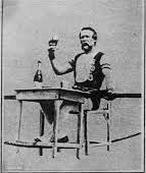 In general, one may consider an AOC Trousseau Noir of the Jura a juicy, delightful, tasty red that nonchalantly unveils the minerality of its marly terroir while still maintaining focus. From this perspective, it has been said to resemble a confident Chablis. Its sense of sprezzatura feels natural, only hinting at the artifice of the vigneron. Eluding facile pigeonholing and nomenclature, it is often light, yet neither fluffy nor gratuitous with pronounced yet balanced tannins. This allows it to revel in its dual nature, where it is both light and dark, and may question and subvert in one setting, or confirm and conform in another. With one foot on each side of a potential dichotomy, a Trousseau Noir walks a tightrope of studied nonchalance, … like a trickster, a mischievous, confident trickster. Notes:
[i] To cite only two recent examples from online newspaper/magazine sources, this grape is central to the articles by Nadia Fournier in L’Actualité, and Will Lyons of The Wall Street Journal Online, who urge people to “sortir des sentiers battus” and “step off wine’s well-travelled routes,” respectively. The latter source also mentions the important work of Wink Lorch in this regard. [ii] According to Jancis Robinson et al., (2012), Trousseau is referred to as the following: “Bastardinho (Portugal), Bastardo (Dão and Douro in Portugal), Bastardo (Orense in Galicia in Spain), Carnaz (Galicia), Godello tinto (Galicia), Maria Ordoña (Orense), Maria Ordoñez (Orense and León in Spain), Maturana tinta (La Rioja in Spain), Merenzao (Bierzo in Spain), Roibal (Paderne in La Coruña in Spain), Tinta or Tintilla (parts of Tenerife), Tinta Lisboa (Portugal), Trousé (Salins-les-Bains in the Jura), Trousseau noir, Trousseau, Verdejo (Asturias and Lugo in Spain), Verdejo negro or Verdejo tinto (Asturias and Rueda in Spain).” The cases of mistaken identity are these: “Alfrocheiro, Cabernet Pfeffer, Castelão (Portugal), Donzelinho tinto (Portugal), Pinto noir, Tressot (Yonne)” (1093). There is Trousseau Gris (Grey Riesling) in California and versions of Bastardo in Oregon’s Umpqua Valley, and eastern Europe (1095). [iii] Jung, 56-58. [iv] See Bloom, 221. [v] See Homer, Book IX, verses 307-359. [vi] See the numerous pseudonyms used by the character Ermes Marana in Italo Calvino’s novel for the disruptive potential of false names. [vii] Poe, 16. [viii] Corrêa Gabbard, 20. [ix] da Silva, 167. The author mentions how there is scarce biographical information on Rui Fernandes. [x] Robinson, et al., 1094. In the same volume, the authors make reference to a “Bastardo Magarachsky” that is a cross with Saperavi, created in 1949, and widely planted in the Ukraine, though also present in the Republic of Moldova, Romania, Russia, and Central Asia (92). [xi] See the articles by Diez-Losada and Perestrelo. [xii] Diaz-Losada et al (2012), 32-33. [xiii] Robinson, et al., 1094. [xiv] Lorch, 18-20. [xv] Lorch also stresses that only Chardonnay, Savagnin, Poulsard or Trousseau may be used in Jura AOC Vin de Paille (26). [xvi] Johnson, 1983 (150-151). [xvii] Lorusso, 144. [xviii] Lorch, 36. [xix] Ibid., 44. References: Bloom, Harold, Ed. The Trickster. New York: Infobase Publishing, 2010. Calvino, Italo. If on a winter’s night a traveler … . Translated by William Weaver. San Diego: Harcourt, 1981. Corrêa Gabbard, Alexandra Lauren, “The Figure of the Trickster in Poe’s ‘Hop Frog’ and ‘The Cask of Amontillado’,” Anais … Belo Horizonte: UFMG, 2009, 18-22. da Silva, Francisco Ribeiro. “Do Douro o Porto: O protagonismo do vinho na época moderna” in Quinhentos/Oitocentos (Ensaisos de História). Porto: Faculdade de letras da Universidade do Porto, 2008 (167-192). Retrieved from http://ler.letras.up.pt/uploads/ficheiros/5830.pdf. Diaz-Losada, E, et al. “Genetic and geographical structure in grapevines from northwestern Spain” Annals of Applied Biology 161 (2012) 24-35. Dominé, André, Ed. Wine. Translated by Susan James and Eileen Martin. Königswinter: Könemann, 2004. Fournier, Nadia. “Vins, pourquoi pas le Jura?” L’Actualité 36.19 (Dec. 1, 2011): 81. Homer. The Odyssey. Translated by Samuel Butler. New York: Quarto Publishing, 2015. Johnson, Hugh. Hugh Johnson’s Wine Companion. The New Encyclopedia of Wines, Vineyards and Winemakers. London: Mitchell Beazley, 1983. Johnson, Hugh and Jancis Robinson. The World Atlas of Wine. 7th Edition. London: Mitchell Beazley, 2013 . Jung, Carl Gustav. Man and His Symbols. New York: Dell Publishing, 1968. Lorch, Wink. Jura Wine: With Local Food and Travel Tips [Adobe Digital Editions version]. Retrieved from Kobobooks.com. Lorusso, Daniele. (2012-2013). Il clima del vino. Metodi di ricostruzione e impatti economici delle fluttuazioni climatiche nelle regioni vitivinicole (secoli XVII-XX) (Doctoral dissertation). Retrieved from https://air.unimi.it/retrieve/handle/2434/233400/307235/phd_unimi_R09333.pdf Lyons, Will. “The Best French Wine You’ve Never Heard of. Sometimes it pays to step off wine’s well-traveled routes” The Wall Street Journal Online (22 may 2014). Perestrelo, Rosa, et al. “Establishment of the varietal profile of Vitis vinifera L. grape varieties from different geographical regions based on HS-SPME/GC-qMS combined with chemometric tools” Microchemical Journal 116 (2014) 107-117. _______ . “Optimisation of solid-phase microextracftion combined with gas chromatography-mass spectrometry based methodology to establish the global voltatile signature in pulp and skin of Vitis vinifera L. grape varieties” Talanta 85 (2011) 1483-1493. Poe, Edgar Allan. “The Cask of Amontillado” in The Best of Edgar Allan Poe. Clayton, Delaware: Prestwick House, 2006, 161-166. Robinson, Jancis, Ed. The Oxford Companion to Wine. 4th Edition. Oxford: Oxford UP, 2015. Robinson, Jancis, et al. Wine Grapes. A complete guide to 1,368 vine varieties, including their origins and flavours. London: HarperCollins, 2012.
0 Comments
Your comment will be posted after it is approved.
Leave a Reply. |
AuthorsAstrid Friedrich Archives
May 2017
Categories
All
|

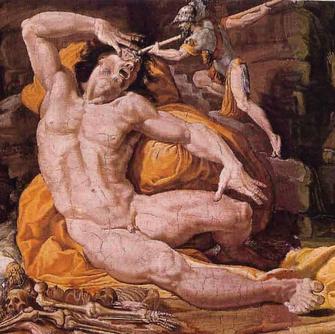
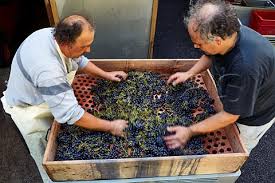
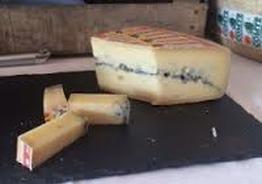
 RSS Feed
RSS Feed